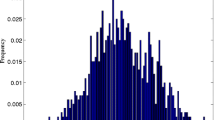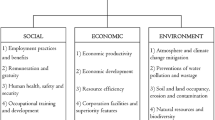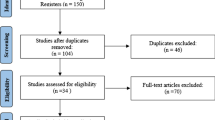Abstract
Purpose
The concept of sustainability and sustainable development has been widely incorporated in energy and industrial systems. This paper is the second part of a two-paper series dealing with multi-actor multi-criteria sustainability assessment of alternative energy and industrial systems in life cycle perspective under uncertainties.
Methods
The criteria system including four macroscopic aspects (environmental, safety, social and economic aspects) has been developed for sustainability assessment of energy and industrial systems. An improved extension theory which can address interval decision-making matrix has been developed for determining the sustainability degree of the energy and industrial systems.
Results and discussion
The weights of the criteria for sustainability assessment are the first part of the two-paper series. An illustrative case has been studied by the proposed multi-criteria decision-making method, and the sustainability of six alternative options for the production of a 1-t product was investigated. The sustainability degree of these six alternative options can be determined by the proposed method.
Conclusions and perspectives
A methodology for multi-actor multi-criteria sustainability assessment of energy and industrial options has been developed in this study, the traditional extension theory has been modified to deal with the uncertainty problems and the proposed method can rank the alternative energy and industrial systems with the decision-making matrix in which the data of the alternatives with respect to the evaluation criteria are intervals. In the improved extension theory, sustainability has been dived into five grades: excellent, good, satisfied, barely adequate and fail. According to the method for calculating the weights of the criteria for sustainability assessment proposed in part 1, these weights were used to calculate the integrated dependent degree which is a measure of what degree an alternative belongs to the classical fields. An optimal programming model for maximizing the satisfied degree has been developed to rank the sustainability sequence of the alternative options and determine the sustainability degree of each alternative.

Similar content being viewed by others
Abbreviations
- AJ:
-
Added jobs
- AP:
-
Acidification potential
- E:
-
The frequency of dangerous incident
- GWP:
-
Global warming potential
- IC:
-
Investment cost
- ILC:
-
Impact on local culture
- IRR:
-
Internal rate of return
- L:
-
The possibility of accident
- LCS:
-
Life cycle safety
- NPV:
-
Net present value
- PCOP:
-
Photochemical oxidation potential
- a ij :
-
The lower bound of scenario i (i = 1,2,…,m) with respect to indicator c j (j = 1,2,…,n)
- a xj :
-
Lower bound of v xj
- α :
-
The interval-converting coefficient
- b ij :
-
The upper bound of scenario i (i = 1,2,…,m) with respect to indicator c j (j = 1,2,…,n)
- b xj :
-
Upper bound of v xj
- ICC :
-
Interval-converting coefficient
- k id :
-
The integrated dependent degree of the (i)th matter element to grade t
- \( {k}_{id}^L \) :
-
The lower bound of the integrated dependent degree of scenario i to the grade d
- \( {k}_{id}^U \) :
-
The upper bound of the integrated dependent degree of scenario i to the grade d
- N d :
-
The divided grade d
- R d :
-
The classical domain
- N x :
-
The grade of the matter element for assessment
- R x :
-
The matter element for assessment
- R P :
-
Segment field
- U :
-
A space of objects
- x :
-
A matter element
- v xj :
-
The value of x with respect to the characteristic c j
- v pj :
-
The union set of the values with respect to the characteristic c j in all grades
- w j :
-
The weight of the characteristic (indicator) j
- z pd :
-
A binary variable; it represents that the matter element p belongs to the grade t when z pd equals 1; on the contrary, it represents that the matter element p does not belong to the grade t when z pd equals 0.
References
Akhtar S, Reza B, Hewage K, Shahriar A, Zargar A, Sadiq R (2015) Life cycle sustainability assessment (LCSA) for selection of sewer pipe materials. Clean Tech Environ Policy 17(4):973–992
Alefeld G, Herzberger J (1983) Introduction to interval computations. Academic Press, New York
An D, Yang Y, Chai X, Xi B, Dong L, Ren J (2015) Mitigating pollution of hazardous materials from WEEE of China: portfolio selection for a sustainable future based on multi-criteria decision making. Resour Conserv Recycl 105:198–210
Andrews ES, Barthel LP, Beck T, Benoit C, Ciroth A, Cucuzella C, Gensch CO, Hérbert J, Lesage P, Manhart A, Mazeau P, Mazijn B, Methot AL, Moberg A, Norris G, Par-ent J, Prakash S, Reveret JP, Spillemaeckers S, Ugaya CML, Valdivia S, Weidema B. (2009) UNEP/SETAC life cycle initiative: guidelines for social life cycle assessment of products. This file is available at: http://www.unep.fr/shared/publications/pdf/dtix1164xpa-guidelines_slca.pdf (Access on 1st Oct., 2016)
Asiedu Y, Gu P (1998) Product life cycle cost analysis: state of the art review. Int J Prod Res 36(4):883–908
Benetto E, Rousseaux P, Blondin J (2004) Life cycle assessment of coal by-products based electric power production scenarios. Fuel 83:957–970
Cai W (1983) The extension set and incompatible problem. Sci Explor 3(1):83A (in Chinese)
Chen TY, Tsao CY (2008) The interval-valued fuzzy TOPSIS method and experimental analysis. Fuzzy Sets Syst 159(11):1410–1428
Chithambaranathan P, Subramanian N, Gunasekaran A, Palaniappan PK (2015) Service supply chain environmental performance evaluation using grey based hybrid MCDM approach. Int J Prod Econ 166:163–176
Fawaz AN, Ruparathna R, Chhipi-Shrestha G, Haider H, Hewage K, Sadiq R (2016) Sustainability assessment framework for low rise commercial buildings: life cycle impact index-based approach. Clean Tech Environ Policy 18(8):2579–2590
Feng JZ, Wu L, Li HL (2007) Discussion of hazard identification and risk assessment methodology. Chem Safety Environ 18:15–17 (in Chinese)
Hossaini N, Reza B, Akhtar S, Sadiq R, Hewage K (2015) AHP based life cycle sustainability assessment (LCSA) framework: a case study of six storey wood frame and concrete frame buildings in Vancouver. J Environ Plan Manage 58(7):1217–1241
Huang B, Mauerhofer V (2016) Life cycle sustainability assessment of ground source heat pump in Shanghai, China. J Clean Prod 119:207–214
Jahan A, Edwards KL (2013) VIKOR method for material selection problems with interval numbers and target-based criteria. Mater Design 47:759–765
Jahanshahloo GR, Lotfi FH, Izadikhah M (2006) An algorithmic method to extend TOPSIS for decision-making problems with interval data. Appl Math Comput 175(2):1375–1384
Kaya T, Kahraman C (2010) Multicriteria renewable energy planning using an integrated fuzzy VIKOR & AHP methodology: the case of Istanbul. Energy 35(6):2517–2527
Klöpffer W (1997) Life cycle assessment. Environ Sci Pollution Res 4(4):223–228
Kuang H, Kilgour DM, Hipel KW (2015) Grey-based PROMETHEE II with application to evaluation of source water protection strategies. Inf Sci 294:376–389
Kucukvar M, Noori M, Egilmez G, Tatari O (2014) Stochastic decision modeling for sustainable pavement designs. Int J Life Cycle Assess 19(6):1185–1199
Liu Z, Huang Y (2012) Technology evaluation and decision making for sustainability enhancement of industrial systems under uncertainty. AICHE J 58(6):1841–1852
Liu KFR, Ko CY, Fan C, Chen CW (2012) Combining risk assessment, life cycle assessment, and multi-criteria decision analysis to estimate environmental aspects in environmental management system. Int J Life Cycle Assess 17(7):845–862
Lou HH, Kulkarni MA, Singh A, Hopper JR (2004) Sustainability assessment of industrial systems. Ind Eng Chem Res 43:4233–4242
Manzardo A, Ren J, Mazzi A, Scipioni A (2012) A grey-based group decision-making methodology for the selection of hydrogen technologies in life cycle sustainability perspective. Int J Hydrog Energy 37(23):17663–17670
Menikpura SNM, Gheewala SH, Bonnet S (2012) Framework for life cycle sustainability assessment of municipal solid waste management systems with an application to a case study in Thailand. Waste Manage Res 28:1–12
Motuzienė V, Rogoža A, Lapinskienė V, Vilutienė T (2016) Construction solutions for energy efficient single-family house based on its life cycle multi-criteria analysis: a case study. J Clean Prod 112:532–541
Myllyviita T, Holma A, Antikainen R, Lähtinen K, Leskinen P (2012) Assessing environmental impacts of biomass production chains–application of life cycle assessment (LCA) and multi-criteria decision analysis (MCDA). J Clean Prod 29:238–245
Onat NC, Kucukvar M, Tatari O (2014) Integrating triple bottom line input–output analysis into life cycle sustainability assessment framework: the case for US buildings. Int J Life Cycle Assess 19(8):1488–1505
Othman MR, Repke JU, Wozny G, Huang YL (2010) A modular approach to sustainability assessment and decision support in chemical process design. Ind Eng Chem Res 49:7870–7881
Ren J, Lützen M (2015) Fuzzy multi-criteria decision-making method for technology selection for emissions reduction from shipping under uncertainties. Transport Res Part D: Transport and Environ 40:43–60
Ren J, Fedele A, Mason M, Manzardo A, Scipioni A (2013) Fuzzy multi-actor multi-criteria decision making for sustainability assessment of biomass-based technologies for hydrogen production. Int J Hydrog Energy 38(22):9111–9120
Ren J, Gao S, Tan S, Dong L, Scipioni A, Mazzi A (2015a) Role prioritization of hydrogen production technologies for promoting hydrogen economy in the current state of China. Renew Sust Energ Rev 41:1217–1229
Ren J, Manzardo A, Mazzi A, Zuliani F, Scipioni A (2015b) Prioritization of bioethanol production pathways in China based on life cycle sustainability assessment and multicriteria decision-making. Int J Life Cycle Assess 20(6):842–853
Ren J, Xu D, Cao H, Wei SA, Dong L, Goodsite ME (2016) Sustainability decision support framework for industrial system prioritization. AICHE J 62(1):108–130
Sala S, Vasta A, Mancini L, Dewulf J, Rosenbaum E (2015) Social life cycle assessment. This file is available at: https://www.researchgate.net/profile/Serenella_Sala/publication/292116640_Social_Life_Cycle_Assessment_State_of_the_art_and_challenges_for_supporting_product_policies/links/56a8ed9c08aea8dbc7048ee2.pdf (Access on 29th, Sept., 2016)
Sayadi MK, Heydari M, Shahanaghi K (2009) Extension of VIKOR method for decision making problem with interval numbers. Appl Mathl Model 33(5):2257–2262
Schau EM, Traverso M, Finkbeiner M (2012) Life cycle approach to sustainability assessment: a case study of remanufactured alternators. J Remanufacture 2(1):1–14
Stamford L, Azapagic A (2012) Life cycle sustainability assessment of electricity options for the UK. Int J Energy Res 36(14):1263–1290
Suprajitno H, Mohd IB (2010) Linear programming with interval arithmetic. Int J Contemporary Math Sci 5(5–8):323–332
Tsaur RC (2011) Decision risk analysis for an interval TOPSIS method. Appl Math Comput 218(8):4295–4304
Wang XH, Wang J, Liu DT et al (2009) ML ES risk assessment of the hazard resulting from the construction of mountainous. Transport Sci Tech 2:107–109 (in Chinese)
Yu M, Halog A (2015) Solar photovoltaic development in Australia—a life cycle sustainability assessment study. Sustain 7(2):1213–1247
Zamagni A (2012) Life cycle sustainability assessment. Int J Life Cycle Assess 17(4):373–376
Zheng GZ, Jing YY, Huang HX, Zhang XT, Gao YF (2009) Application of life cycle assessment (LCA) and extenics theory for building energy conservation assessment. Energy 34:1870–1879
Zhou Z, Jiang H, Qin L (2007) Life cycle sustainability assessment of fuels. Fuel 86(1):256–263
Author information
Authors and Affiliations
Corresponding authors
Additional information
Responsible editor: Adisa Azapagic
Electronic supplementary material
ESM 1
(DOCX 78 kb).
Rights and permissions
About this article
Cite this article
Ren, J., Ren, X., Liang, H. et al. Multi-actor multi-criteria sustainability assessment framework for energy and industrial systems in life cycle perspective under uncertainties. Part 2: improved extension theory. Int J Life Cycle Assess 22, 1406–1417 (2017). https://doi.org/10.1007/s11367-016-1252-0
Received:
Accepted:
Published:
Issue Date:
DOI: https://doi.org/10.1007/s11367-016-1252-0




